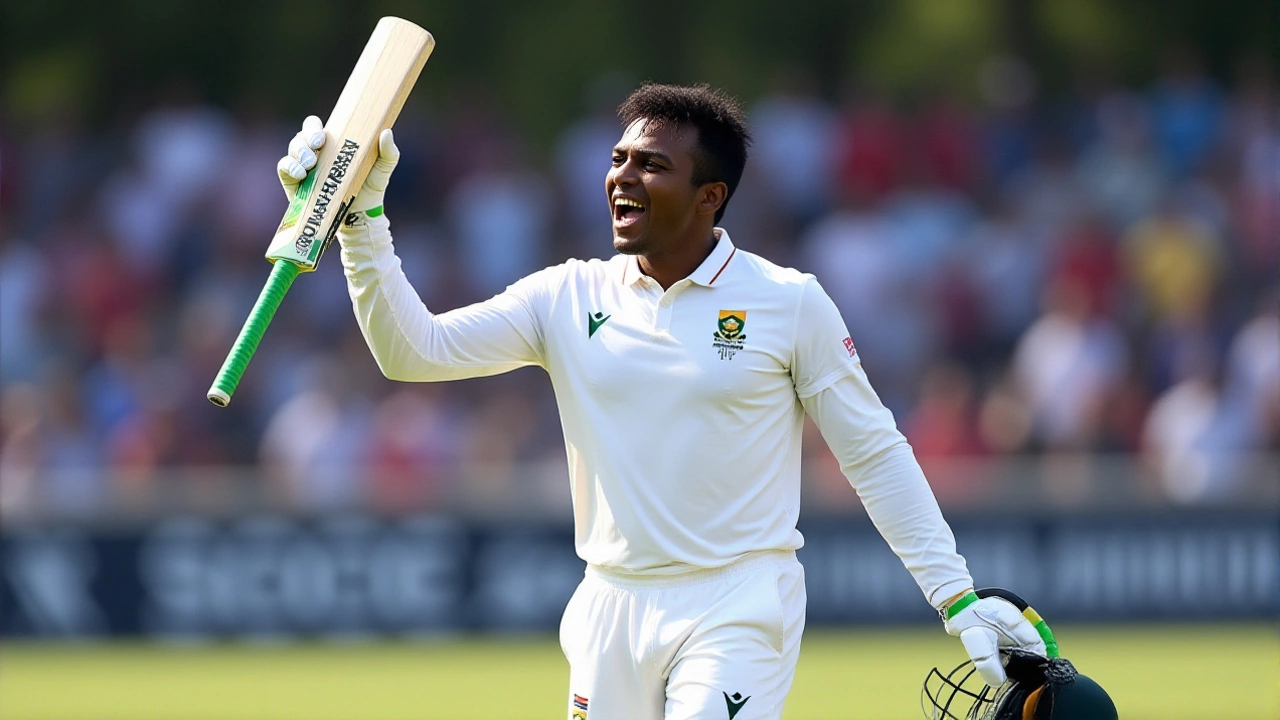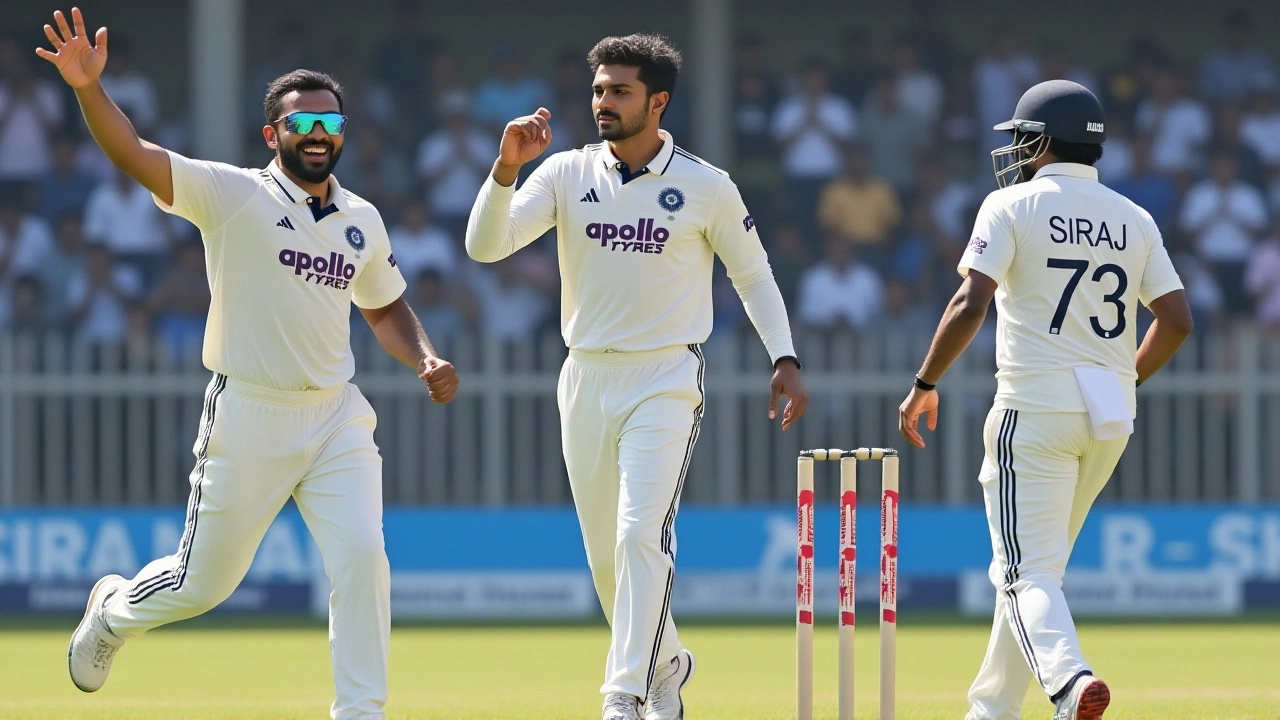At the close of Day 2 at the Barsapara Cricket Stadium in Guwahati, India’s batting lineup stood at 9/0, trailing South Africa by a daunting 480 runs after the visitors posted 489 all out in 151.1 overs. The match, the second Test of the Freedom Trophy 2025 series, marked the first-ever Test match at this northeastern venue — a milestone that turned a quiet cricket town into a national spotlight. With the pitch offering little early help, South Africa’s batters slowly carved out a commanding total, while India’s openers, Yashasvi Jaiswal and KL Rahul, survived 6.1 overs under the lights with calm precision — a small mercy in a day dominated by the visitors.
South Africa’s Batting Masterclass
After winning the toss and electing to bat, South Africa began cautiously, a stark contrast to their explosive start in Kolkata. Aiden Markram and Ryan Rickelton nibbled at the edges of the new ball, letting India’s pace attack — led by Jasprit Bumrah — test their patience. The breakthrough came just before tea, when Bumrah, with a delivery that swung late and jagged back, had Markram edge to second slip. The catch? Dropped by wicketkeeper Rahul. Bumrah, visibly frustrated, threw his helmet to the turf. But the momentum had already shifted. The crowd, which had been buzzing with anticipation since the national anthems, erupted as Markram walked off for 38.
From there, Senuran Muthusamy and Marco Jansen turned the tide. Muthusamy, a gritty No. 6, played his most confident Test innings — 109 runs off 211 balls — anchoring the lower order with wristy strokes and disciplined defense. Jansen, the all-rounder, smashed 93 with power and timing, including a brutal pull off Axar Patel that cleared the ropes. Their 145-run partnership for the seventh wicket was the backbone of South Africa’s total. When Jansen was bowled by Mohammed Siraj at 489, it was the last wicket to fall — and the most valuable.
Pant’s Historic Captaincy
In the absence of regular captain Shubman Gill, Rishabh Pant stepped into the role — becoming only the second wicketkeeper to captain India in Tests after MS Dhoni. Dhoni led India in 60 Tests between 2008 and 2014. Pant, who has captained in ODIs and T20s, now carries the weight of a legacy few have worn. His leadership on Day 2 was quiet but decisive: he rotated bowlers with precision, backed Bumrah’s aggression, and held his fielders accountable after the dropped catch. "He’s not just keeping wickets anymore," said former India captain Anil Kumble on a post-match analysis show. "He’s keeping the ship steady on a pitch that’s not doing much. That’s leadership."
The Pressure on Bavuma’s Unbeaten Record
Temba Bavuma entered this Test with an extraordinary stat: never having lost a Test as captain. Since taking over in 2020, his record stands at 12 wins, 6 draws, 0 losses — the longest undefeated captaincy run in South African Test history. With South Africa as reigning World Test Champions, the stakes were never higher. "We’re not here to make history by accident," Bavuma said after stumps. "We’re here to prove we belong on any pitch, anywhere. India’s a tough place to win — but we’re building something here."

Guwahati’s Debut: A New Frontier for Indian Cricket
The Barsapara Cricket Stadium — nestled in Assam, a region long overlooked by major cricketing authorities — now joins the elite list of Indian Test venues. Built in 2017 and upgraded to international standards only last year, it’s the first Test ground in India’s northeast. The stadium, with its 45,000-seat capacity and lush green backdrop, drew a sell-out crowd for the first time in its history. "This isn’t just about cricket," said Assam Chief Minister Himanta Biswa Sarma. "It’s about inclusion. For decades, our boys watched Tests on TV. Now, they’re part of the story."
What Comes Next: India’s Fight Against the Follow-On
India must now score 481 runs to avoid the follow-on — a daunting task on a pitch that’s likely to slow down further. With the second new ball due in the morning, South Africa’s spinners — Keshav Maharaj and Simon Harmer — will be hungry. India’s middle order, which has struggled in recent home Tests, faces its toughest test yet. Nitish Kumar Reddy, the uncapped batter who made his debut in the first Test, may be called up if the top order falters.
Historically, teams batting second in Guwahati have found scoring difficult after Day 2. The average fourth-innings score here is just 217. But India has won the last seven Tests at home — a streak that includes a 3-0 sweep over Australia last year. The pressure is immense. But so is the opportunity.
Frequently Asked Questions
Why is this Test match historic for India?
This is the first-ever Test match played at the Barsapara Cricket Stadium in Guwahati, making it India’s 31st Test venue and the first in the northeastern region. It marks a major expansion of India’s cricketing footprint beyond traditional hubs like Mumbai, Delhi, and Chennai, symbolizing greater regional inclusion in the sport.
How rare is it for a wicketkeeper to captain India in Tests?
Rishabh Pant is only the second wicketkeeper to captain India in Test cricket, after MS Dhoni. Dhoni led in 60 Tests between 2008 and 2014. No other wicketkeeper has captained India in more than one Test, making Pant’s appointment both historic and high-risk, especially on a pitch where keeping is demanding.
What’s the significance of Temba Bavuma never losing a Test as captain?
Temba Bavuma has captained South Africa in 18 Tests since 2020 — 12 wins, 6 draws, zero losses. That’s the longest unbeaten captaincy run in South African Test history. His leadership has transformed the team’s discipline and mental toughness, and now he’s chasing a rare feat: beating India on home soil as an undefeated captain.
How did Jasprit Bumrah influence the match despite not taking a five-wicket haul?
Bumrah’s dismissal of Aiden Markram just before tea swung momentum back to India after South Africa had dominated the session. Though he finished with just 1/84, his 18 overs included 11 dot balls and constant pressure. His ability to extract movement off the deck, even on a flat pitch, disrupted South Africa’s rhythm and gave India’s spinners a crucial rest before the second new ball.
What are India’s chances of avoiding the follow-on?
India needs 481 runs to avoid the follow-on — a tall order on a pitch expected to deteriorate. Historically, teams batting fourth at Guwahati average under 220. But India’s top order, led by Rahul and Jaiswal, has shown resilience. If Pant can stabilize the middle order and the pitch doesn’t turn drastically, a competitive total is possible — but it’ll require discipline, not aggression.
Why did South Africa’s innings slow down after the first 10 overs?
The pitch, though initially offering some seam movement, flattened out after the 10th over, making strokeplay easier. India’s early aggression with the new ball kept South Africa cautious, but once the ball lost its shine and the surface settled, batters like Muthusamy and Jansen exploited the lack of spin and pace to build their partnerships methodically.



